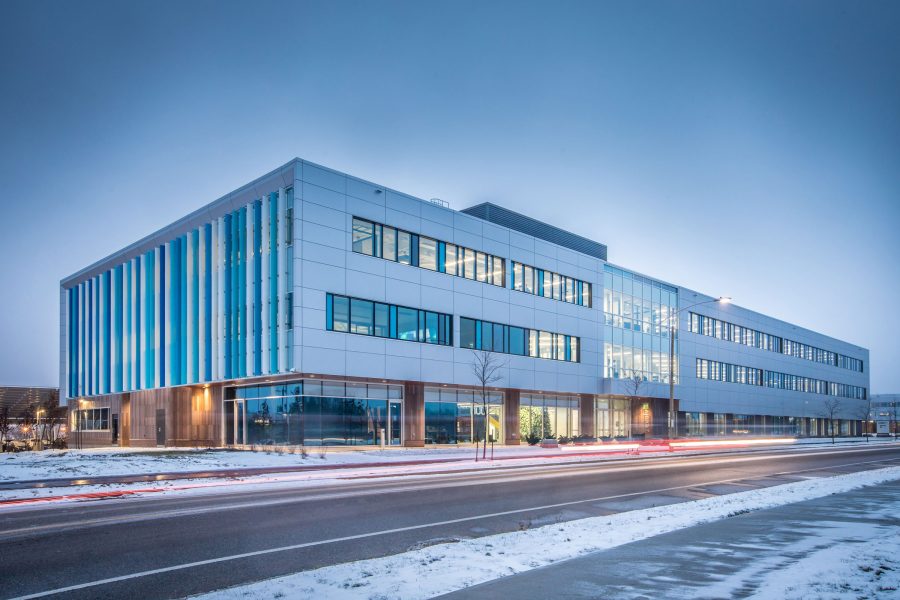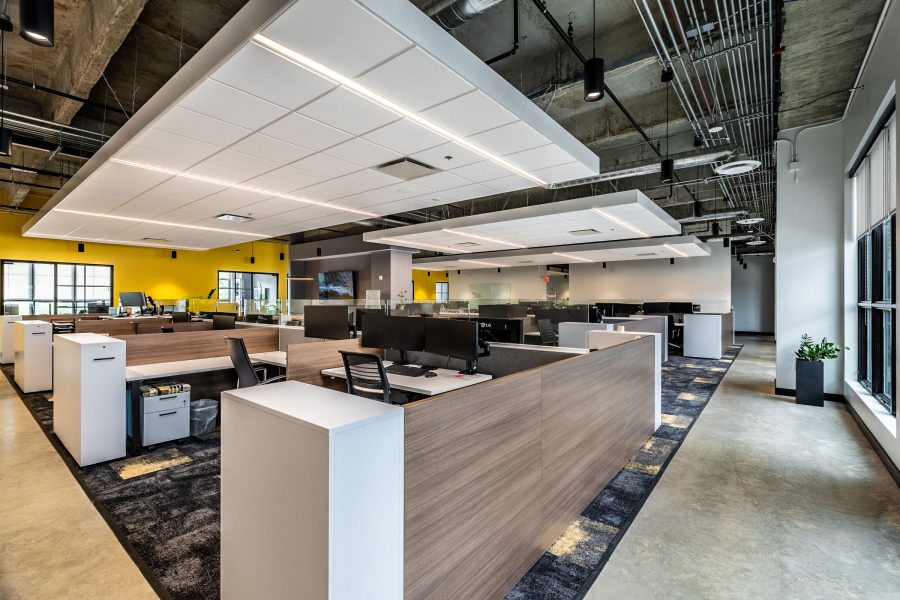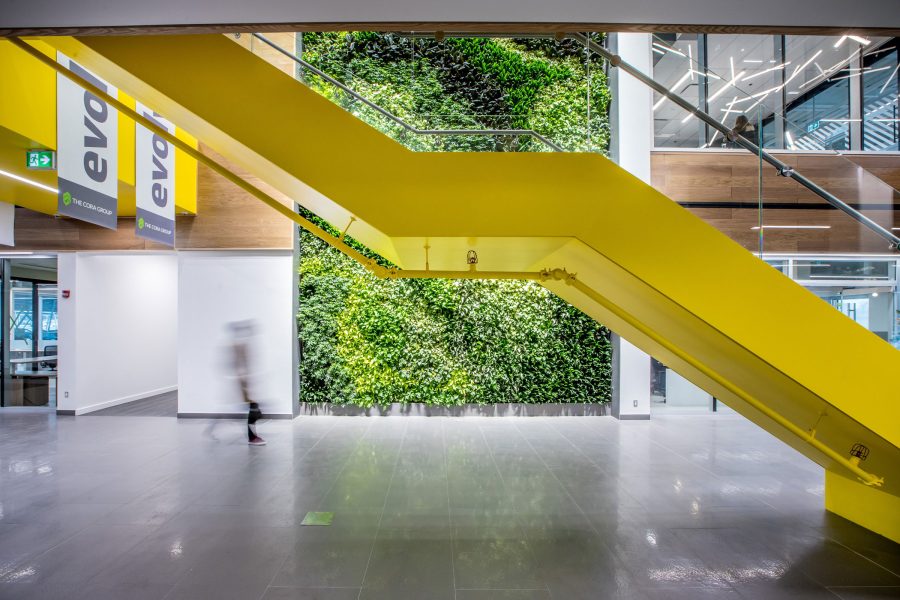Story at a glance:
- As policies, technologies, and consumer preferences align, electrification is set to redefine how we heat, cool, and power our buildings—paving the way for a more sustainable built environment.
- Modern heat pump systems and low-GWP refrigerants are making high-efficiency, all-electric HVAC solutions viable across more climates and building types than ever before.
- Architects and manufacturers alike share their insights on how to prepare for electrification and the rise of all-electric buildings.
The HVAC industry is undergoing a profound transformation. Driven by the need to decarbonize buildings and improve energy efficiency, electrification is emerging as the dominant pathway for the future of HVAC.
With advancements in heat pump technology, shifts to low global-warming-potential (GWP) refrigerants, and a mix of utility programs and enhanced tax credits to help the bottom line, all-electric buildings are no longer a niche trend, but a cornerstone of the green building playbook.
The Shift Toward Electrification
Historically HVAC systems relied on fossil fuel-based technologies like gas-fired furnaces and boilers. However, the industry is reaching a convergence point where sustainability, efficiency, and cost-effectiveness align to make electrification an attractive option.
“The combination of policy incentives, technological advancements, and consumer demand is pushing the market toward heat pumps and other electric solutions,” says Doug Bougher, director of applied sales at LG Air Conditioning Technologies, LG Electronics USA. “We’re seeing significant investment in products that maximize efficiency while helping to reduce carbon footprints.”
We’re seeing significant investment in products that maximize efficiency while helping to reduce carbon footprints.
Architects are also saying the demand for all-electric buildings has evolved rapidly. “As the industry commits to decarbonization, electrification has become a central conversation,” says Beth Tomlinson, a senior principal at Stantec and carbon and discipline leader. “Whether in regions where the grid is becoming greener or in areas still reliant on fossil fuels, it’s our responsibility as consultants to guide clients on the impact, availability, and costs of electrification.”
Innovations in Heat Pump Technology

Convoy of Hope. Photo courtesy of LG Electronics
Heat pumps are at the heart of HVAC electrification, capable of efficiently heating and cooling spaces by extracting heat from the air, ground, or water. With different solutions based on the needs and capacity that’s required, modern advancements allow them to operate effectively even in colder climates, expanding their feasibility across building typologies. LG and the University of Alaska recently opened heat pump labs for cold climate HVAC research.
Tomlinson says that while air-source heat pumps have made significant strides, they may not be the best solution for extreme cold conditions. “In regions like Minnesota and Canada, where temperatures can plummet into the negatives, air-source heat pumps still face challenges. However, alternative solutions like aquifer-based heat pumps and thermal storage are emerging to improve resilience and efficiency.”
Aquifer-based heat pumps, for example, utilize underground water sources to provide consistent heating and cooling. “Instead of requiring a vast field for geothermal systems, a single borehole up to 800 feet deep can support an entire building,” she says. “These systems are not exposed to ambient temperature changes from extreme heat or cold, wind or hail. They’re very contained, making them a resilient and effective electrification solution.”
Domestic Hot Water and Refrigerant Evolution
Electrification is not limited to space heating and cooling; it also extends to domestic hot water. LG has introduced heat pump water heaters designed to reduce energy consumption compared to traditional electric resistance heaters.
In parallel, the industry is transitioning toward refrigerants with lower GWP—a trend Bougher believes will continue to shape the next phase of HVAC evolution. “R-32 refrigerant, for example, has a lower global warming potential than traditional alternatives. It has excellent thermodynamic performance, delivers higher capacity and enhanced efficiency, so you also use less of it,” he says.
The Role of Building Envelope Efficiency

Stantec’s evolv1 is the first building to receive Zero Carbon Building–Design certification under CaGBC’s Zero Carbon Building Standard. Photo by Jesse Milns, courtesy of Stantec
While electrification is a crucial step, Tomlinson stresses that designing buildings for energy efficiency should come first. “Before electrifying it’s vital to optimize a building’s envelope,” she says. “Enhancing insulation, improving air sealing, and implementing passive design strategies can significantly reduce heating and cooling loads, making electrification more cost-effective and impactful.”
Too often building owners view electrification as a simple equipment swap rather than a strategy requiring a holistic and joined-up approach. “Electrifying without reducing demand can lead to high upfront costs and increased operational expenses,” Tomlinson says. “We must first focus on reducing energy loads.”
Policy Incentives & Financial Considerations
Government incentives are accelerating the adoption of electrified HVAC systems, at least for the time being. The Inflation Reduction Act earmarked funding to support electrification efforts, spurring utility programs and amendments to tax credits.
Bougher highlights the impact of policies like the updated 179D tax deduction for energy-efficient commercial buildings. “These incentives are helping to make it financially appealing for building owners to invest in electrification and, as a consequence, high-performance systems are more accessible.” While 179D has existed since 2005, the amount of money associated with it has recently increased to a maximum of $5 per square foot for eligible building systems. Bougher notes that to access the tax credits, designers need to reach the energy efficiency benchmark ASHRAE 2007, which is easily attainable with an electric system.
Addressing Misconceptions & Challenges

KBSO Consulting’s co-owned office showcases LG’s VRF technology, delivering energy efficiency and flexibility while reflecting the firm’s human-centered values. Below, LG’s Multi V 5 VRF system keeps Convoy of Hope comfortable year-round while reducing energy costs. Savings go toward programs that empower women, feed children, and respond to disasters worldwide. Photo courtesy of LG Electronics
Despite the momentum, misconceptions around all-electric buildings persist. Tomlinson points out that some assume electrification guarantees resilience during power outages. “Many people believe that if they have solar panels, they will remain powered during an outage. However, most utilities require solar PV systems to disconnect for safety reasons unless a battery backup is installed.”
Cost concerns are another barrier. Retrofitting existing buildings for electrification can be expensive, especially if electrical capacity is limited. “Understanding a building’s panel capacity and electrical infrastructure is vital before making the switch.”
Another challenge is peak electricity demand. As more buildings electrify, utilities must manage higher loads, particularly during extreme weather conditions. “Demand flexibility programs and energy storage solutions will play a key role in ensuring grid stability,” she says, noting that these issues are often nuanced. While Stantec generally recommends electrifying as much as is feasible, buildings can always supplement where necessary. “We advocate for beneficial electrification over full electrification all the time,” she says.
Health & Environmental Benefits

Stantec designed evolv1 in Ontario to include a high-performance building envelope with triple glazing, a solar wall for preheated ventilation, a geo-exchange and VRF HVAC system, and a green wall. Photo by Jesse Milns, courtesy of Stantec
Beyond carbon reduction, electrification also offers significant occupant health benefits. One area where this is particularly evident is in cooking. “Residential kitchens often lack proper exhaust ventilation, leading to increased exposure to particulate matter from gas stoves,” Tomlinson says. “Studies show that gas stoves contribute to higher rates of asthma and cardiovascular diseases. Switching to electric cooking can significantly improve indoor air quality.”
Electrification also reduces localized pollution. “Fossil fuel furnaces produce nitrogen oxides and other pollutants that disproportionately impact disadvantaged communities,” she says. “By moving away from combustion-based heating, we can improve outdoor air quality and promote environmental justice.”
The Future of HVAC Electrification
While challenges remain, the HVAC industry is embracing change and is on a clear trajectory toward electrification. “The pace of innovation is accelerating, and with continued advancements, electrification will soon become the standard rather than the exception,” Bougher says.
Tomlinson envisions a future where buildings require minimal HVAC intervention. “If we can design buildings that are naturally comfortable and energy-efficient, we reduce the need for mechanical heating and cooling altogether. That should be the ultimate goal.”

